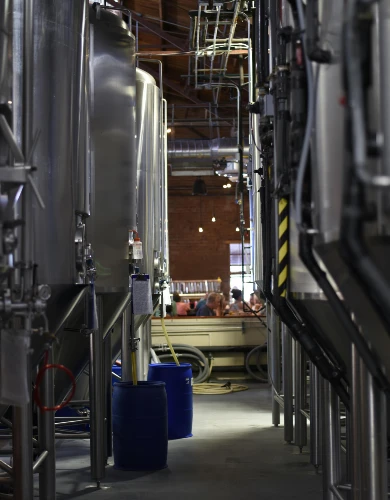Natural gas storage in the UK
Gas storage plays a crucial role in the flexibility and security of the UK’s energy industry. This article explains the status of the UK’s gas storage facilities and their impact on electricity and gas supplies. We cover:
- What is natural gas storage?
- Gas storage facilities in UK
- Gas storage capacity in the UK
- National Transmission System and gas storage
What is natural gas storage?
Natural gas storage is the practice of holding surplus gas in large facilities so it can be used later when demand is higher. In the UK, gas is stored either underground in depleted gas fields or salt caverns. Stored gas acts as a buffer for the national grid, helping to balance seasonal demand, manage supply disruptions, and support stable gas prices.
Gas storage facilities in the UK
There are nine active natural gas storage facilities in the UK, providing a combined 3.2 billion cubic metres of storage capacity. This is enough to meet the country’s gas needs for around a week during peak winter demand.
To highlight their importance to the energy market, most of these sites are owned by members of the ‘big six’ business energy suppliers.
Types of gas storage in the UK
Gas storage facilities in the UK use two methods of gas storage, each providing different functions in balancing supply and demand on the grid.
Salt Cavern: Underground cavities created by dissolving salt formations, which are ideal for high-deliverability storage. Salt cavern storage sites can quickly inject large volumes of gas into the grid when required.
Depleted Field: These are former gas fields that have been depleted of their natural gas and repurposed for storage. They are often used for longer-term, seasonal storage due to their slower withdrawal rates.
Where are the UK’s gas storage facilities?
The largest gas storage facility, Rough, is located offshore in the North Sea. Once a producing gas field, Rough has been converted to store gas and is closely connected to Britain’s natural gas distribution network.
Most of the other storage sites are clustered in Yorkshire and Cheshire, where the local geology has created ideal underground salt caverns. Their central location makes them well placed to supply gas to the grid during periods of high demand.
The table below lists all nine UK gas storage facilities, showing their locations, owners, storage types, and how much gas each can hold in relation to national demand.
| Owner | Site | Location | Type | Capacity (billion cubic meters) | Capacity days (UK average gas use) | Capacity days (UK peak gas use) |
|---|---|---|---|---|---|---|
| Scottish and Southern Energy & Statoil | Aldbrough | East Yorkshire | Salt cavern | 0.29 | 1.2 | 0.7 |
| Uniper | Holford | Cheshire | Salt cavern | 0.24 | 1.0 | 0.6 |
| Scottish and Southern Energy | Hornsea | East Yorkshire | Salt cavern | 0.31 | 1.2 | 0.7 |
| EDF Trading | Holehouse Farm | Cheshire | Salt cavern | 0.02 | 0.1 | 0.1 |
| Humbly Grove Energy | Humbly Grove | Hampshire | Depleted field | 0.28 | 1.1 | 0.7 |
| Scottish Power | Hatfield Moor | South Yorkshire | Depleted field | 0.11 | 0.4 | 0.3 |
| EDF Energy | Hill Top Farm | Cheshire | Salt cavern | 0.06 | 0.2 | 0.1 |
| Storenergy | Stublach | Cheshire | Salt cavern | 0.41 | 1.6 | 0.9 |
| Centrica (British Gas) | Rough | Southern North Sea | Depleted field | 1.50 | 6.0 | 3.5 |
| Total: | 3.2 | 12.9 | 7.5 |
Gas storage capacity in the UK
The UK has approximately 3.2 billion cubic metres of natural gas storage capacity spread across its nine operational sites.
In 2024, total UK gas demand reached 688,624 GWh, which is about 65.3 billion cubic metres. This means Britain’s gas storage sites can hold only around 5% of the gas the country uses each year.
During peak winter consumption, the country only has around a week’s worth of gas held in reserve, leaving it exposed to sudden supply shocks, extreme weather, or geopolitical tensions.
Impact on energy security for gas storage
The UK’s limited gas storage capacity makes its energy system more vulnerable to disruption.
In the absence of storage capacity, Britain relies heavily on the continued delivery of gas from Liquefied Natural Gas terminals and the Langeled pipeline from Norway.
Any supply disruption from these sources has an immediate impact on the wholesale gas market, sharply pushing up both household and business gas prices, and affecting the wider economy.
How does this compare to the European Union
The European Union has far more extensive gas storage infrastructure. Collectively, EU countries have underground storage sites able to hold approximately 20% of their annual gas demand.
This contrast highlights why the UK is more exposed to short-term price volatility and supply risks. Britain relies heavily on continuous pipeline imports and LNG shipments, while EU countries can draw down their large reserves during supply disruptions or winter demand spikes.
National Transmission System and gas storage
The British natural gas grid is composed of the high-pressure National Transmission System, which feeds gas power stations and the regional gas networks that supply individual homes and businesses.
Domestic and business gas suppliers rely on the National Transmission System to maintain sufficient pressure in the gas network, ensuring that the demand of all domestic and business gas connections is always met.
Gas storage facilities in Britain play a key role in balancing supply and demand on the network. Here, we will explain the two distinct roles gas storage facilities provide in balancing supply and demand:
Rapid demand response
The salt cavern gas storage facilities have high deliverability and can rapidly inject gas into the network during periods of high demand.
These gas storage facilities help stabilise pressure in the gas network, preventing shortages and spikes in domestic and business gas prices.
Since a large portion of electricity on the national grid is generated using natural gas, these storage facilities also help stabilise domestic and business electricity rates.
Seasonal storage
The depleted field storage sites have higher storage capacity but a lower rate of deliverability. These storage sites allow gas to be stored during the summer months, when demand is lower and gas is cheaper, and then released in the winter to meet higher demand.

